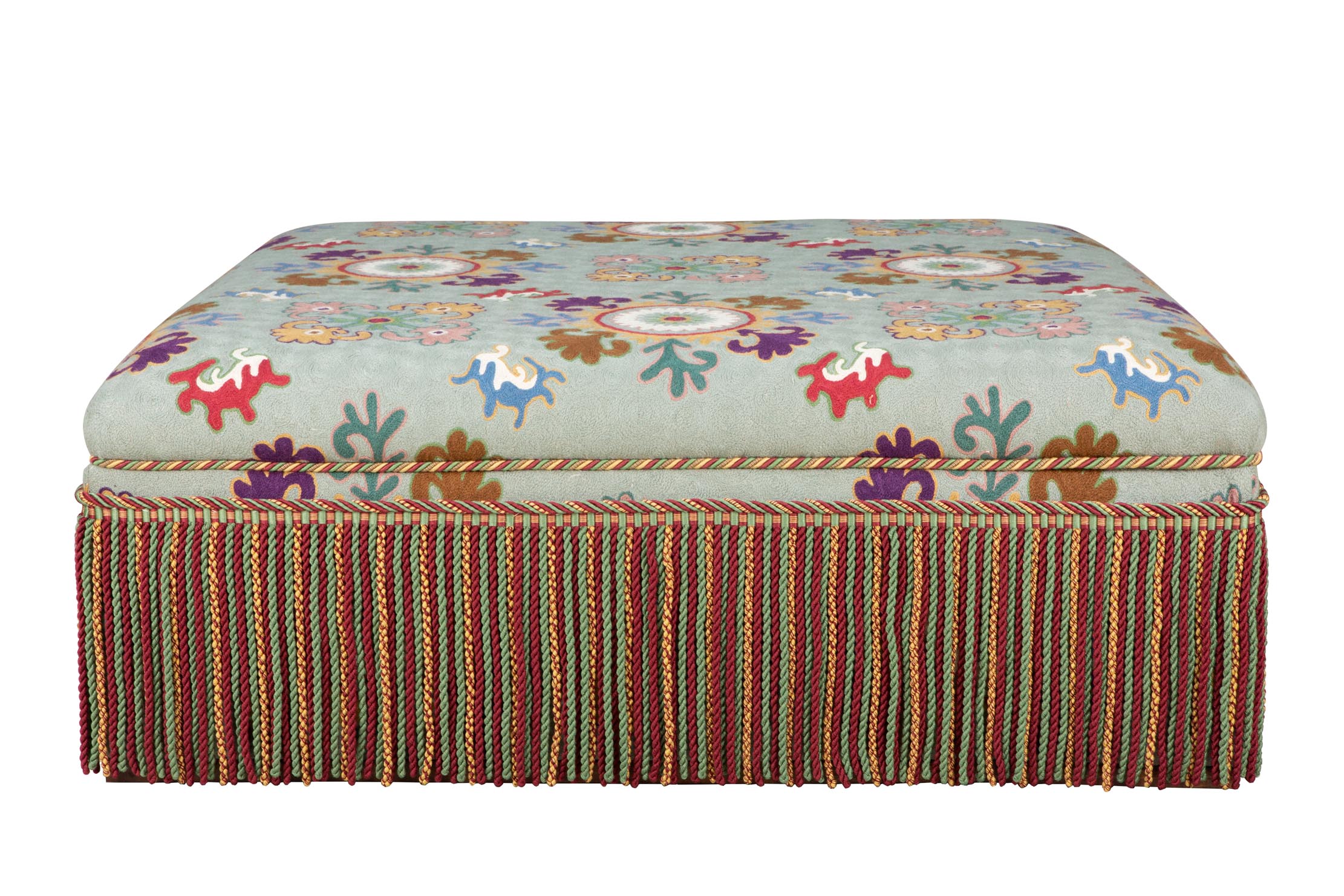Why a little pattern goes a long way — but discretion is the better part of decoration
Being bold is scary, but — as Giles Kiime explains — taking the plunge can pay off handsomely.


If you think that choosing bold paint colours requires a leap of faith, try working your way through a book of patterned fabrics. Picking the wrong paint can be inexpensively rectified, but fabric mistakes can be expensive.
At the upper end of the market, it’s increasingly hard to get much change out of £100 a metre. Multiply that several times over for a sofa, add making-up costs and it’s a risky punt to take on your aesthetic instincts. ‘Oooh, says your closest friend/frenemy,’ sniffing out an opportunity for a jolly bit of schadenfreude, ‘what a brave/quirky choice’ (‘brave/quirky’ in the schadenfreude dictionary roughly translate as ‘unhinged and misjudged).
Large quantities of patterned upholstery are glorious, but Falstaff’s comment that ‘discretion is the better part of valour’ is as relevant to choosing fabric as it is to the Shakespearean battlefield. The answer lies in choosing pattern for lesser elements of a scheme. There’s no doubt that patterned cushions, lampshades and rugs are lifting the mood immeasurably after a decade or two of dreary minimalism; however, making a bolder statement will sometimes pay dividends.

In the middle ground are smaller items of upholstery, such as ottomans, bedheads and modestly proportioned armchairs that require only a few yards of fabric, rather than a whole bolt.
The ottoman is the obvious means of injecting pattern in a sitting room. Descended from a style of low couch that found its way over the Bosphorus in the 18th century, it creates a jaunty focus for an arrangement of sofas and armchairs. Add some braid and bullion fringe and you have something really rather magnificent (in a Suleiman kind of way).

Then there’s the small armchair that goes under various euphemisms (cocktail chair/nursing chair/accent chair) and is great for occasional seating or filling voids. The other opportunity for a small, but striking use of pattern is the upholstered headboard, a decorative device pioneered by Kit Kemp, the creative force behind some of the most stylish hotels in London and New York. A tall, patterned headboard is an imposing presence in a bedroom and creates a feeling of padded comfort that is hard to beat.
In all these instances, the limited expanses of fabric don’t only allow you to trade up, but also to use bolder, large-scale patterns that you’d have to be very brave to choose for curtains. As Falstaff might have said, ‘discretion is the better part of decoration’.
Exquisite houses, the beauty of Nature, and how to get the most from your life, straight to your inbox.
